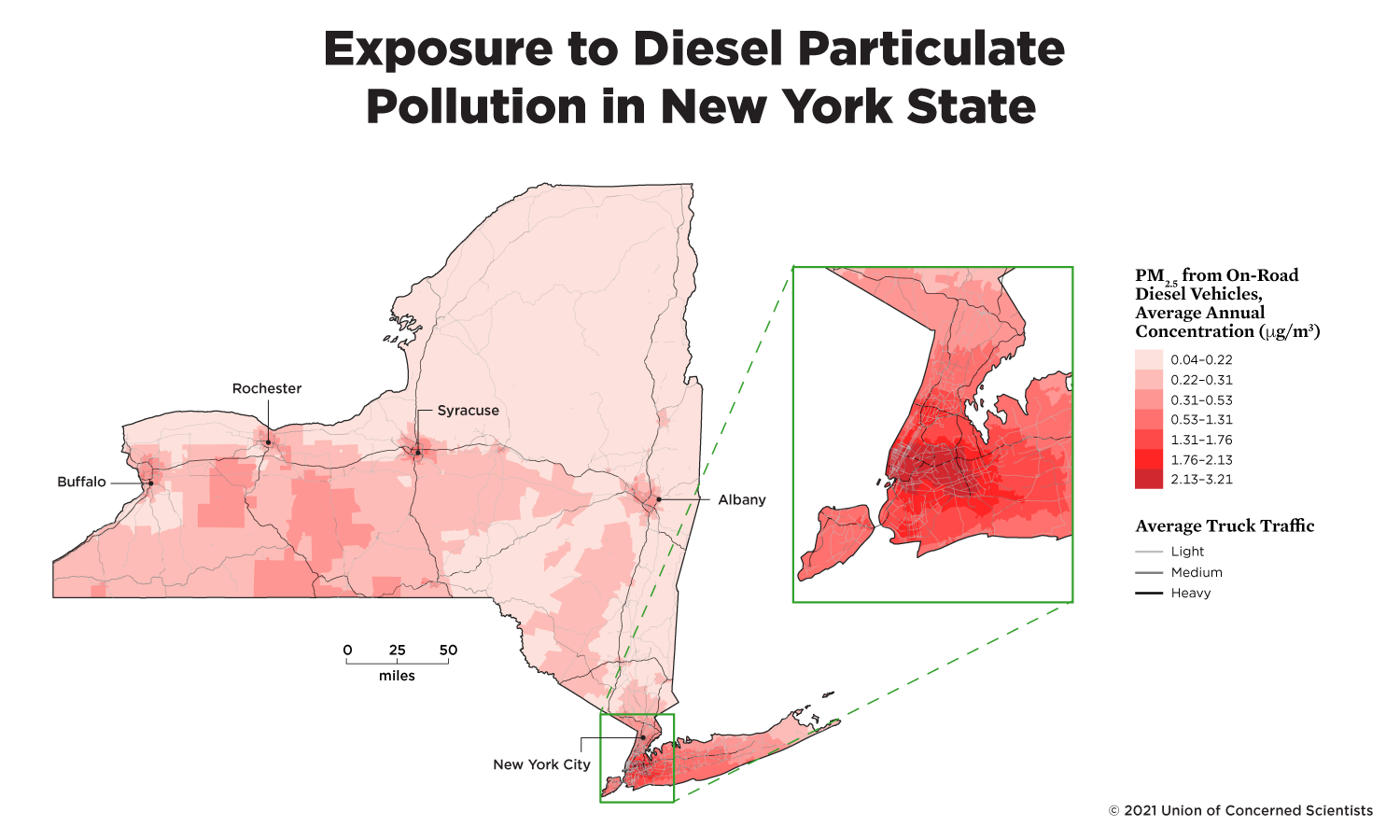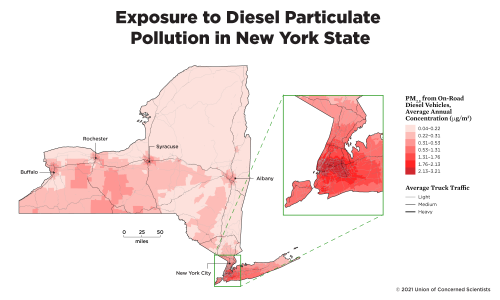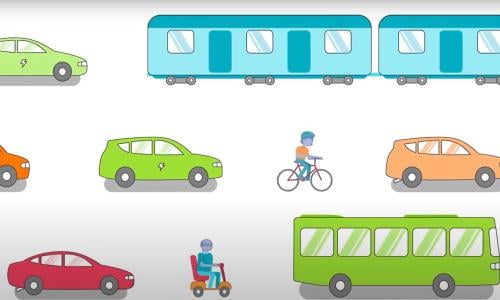Exhaust from diesel trucks and buses is a leading source of harmful air pollution that sends New Yorkers to the hospital every year.
One promising route towards addressing toxic diesel pollution is the adoption of electric trucks and buses, which are available and ready today in most use cases and produce no tailpipe emissions. Transitioning to electric trucks and buses will not only allow New Yorkers to breathe more freely, but will also cut down on climate pollution, save money for truck and bus fleets, and result in lower electricity bills.
Exposure to Diesel Particulate Pollution in New York State
Exhaust from diesel trucks and buses is a leading source of harmful air pollution that sends New Yorkers to the hospital every year. Though medium and heavy-duty trucks and buses make up only five percent of the state’s 10.6 million registered vehicles, they contribute a disproportionate 52 percent of nitrogen oxide (NOx), 45 percent of fine particulate matter (PM2.5), and 24 percent of global warming emissions from all on-road vehicles.
Diesel exhaust contains a cocktail of toxic air pollutants that have led it to be deemed a Group 1 carcinogen by the World Health Organization. This includes NOx which irritates the heart and lungs and worsens the effects of asthma, especially in children and the elderly. NOx then further reacts in the atmosphere to form PM2.5 and ground-level ozone (soot and smog). PM2.5 is responsible for 63 percent of environmentally caused deaths in the US, and has been linked to premature death, increased hospital admissions for heart and lung diseases, bronchitis, and worsening of asthma and chronic obstructive pulmonary disease (COPD).
This pollution costs the state billions of dollars and hundreds of lives lost. The map below shows how on-road diesel pollution from trucks and buses is concentrated in certain areas of the state, usually at the nexus of truck routes and other goods movement infrastructure (ports, warehouses, railyards, etc.). New York City accounts for more than 40% of the population of the state and is one of the country’s biggest logistical centers with some of the highest diesel pollution in the country. Other hot spots across the state include Albany, Buffalo, Rochester, and Syracuse. These diesel pollution hotspots in New York overlap with overall inequitable burdens from all on-road vehicle pollution and communities overburdened with other environmental risks, social determinants of health, and socioeconomic vulnerabilities (see NYenviroScreen).
Strong federal, state, and local policies are necessary to ensure a rapid and equitable transition to electric trucks and buses. A first step is adopting the Advanced Clean Truck (ACT) rule, a first-of-its kind regulation that requires manufacturers to sell an increasing percentage of electric trucks per year. Acknowledging the history of disproportionate air pollution impacts in New York though, the ACT is only a first step of many that are necessary to guarantee pollution reductions in the communities that need it the most. Now is the time for New York to continue its climate and clean air leadership.
One promising route towards addressing toxic diesel pollution is the adoption of electric trucks and buses, which are available and ready today in most use cases and produce no tailpipe emissions. Transitioning to electric trucks and buses will not only allow New Yorkers to breathe more freely, but will also cut down on climate pollution, save money for truck and bus fleets, and result in lower electricity bills.





